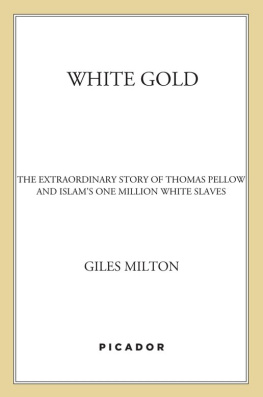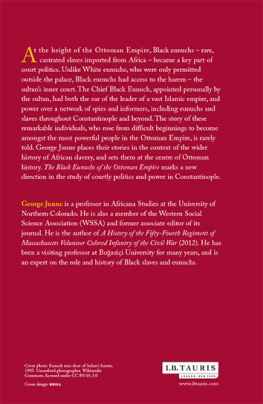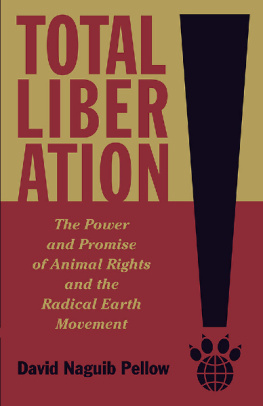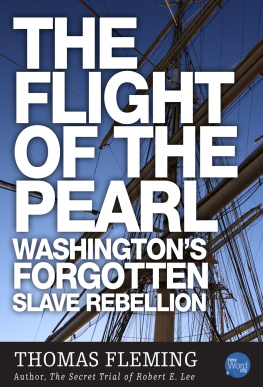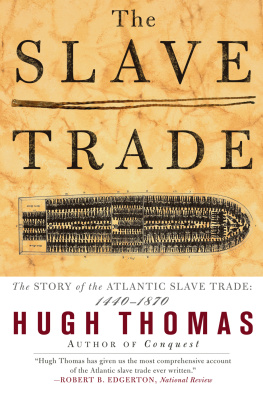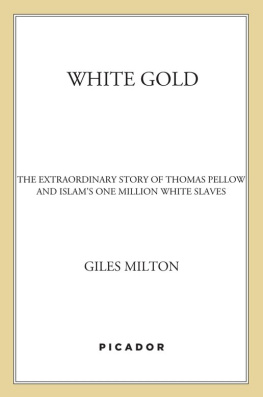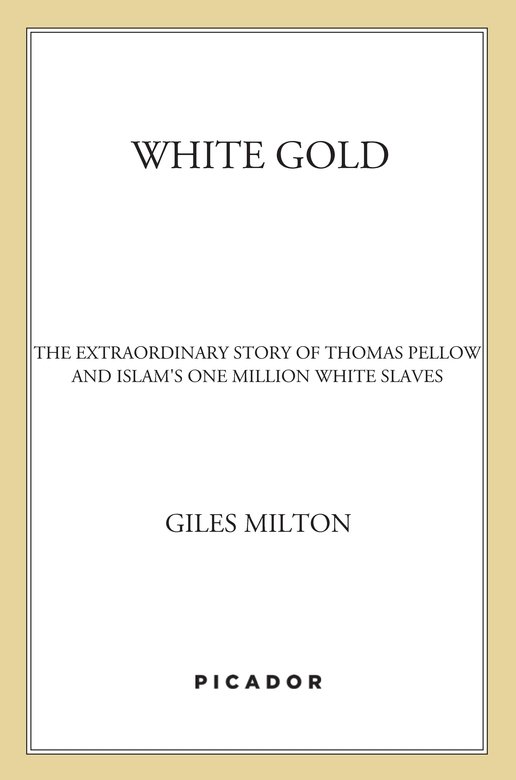
My fascination with the story of white slavery began more than a decade ago while staying in Morocco with the late (and splendidly eccentric) Clive Chandler. Clives country retreat, Dar Zitoun, lay at the heart of the medina in the medieval village of Azzemour. A crumbling Portuguese mansionlovingly restoredit was perched high above the great Oum er Rbia River. It had once been the residence of a local pasha: there were some who joshed that a pasha lived there still.
Id telephoned Clive to ask how to find the place. Follow the tarmac, was his cryptic reply. It all made sense when I arrived. The local mayor had ordered a layer of tarmac to be sluiced along the dust-choked alleys that led to Clives iron-studded front door. He had done so to honor a quintessential Englishmanthe first to have settled in this backwater.
Clives collection of antiquarian books opened my eyes to an extraordinarily colorful period in Moroccan history, while his enthusiasm for his adopted country quickly became infectious. Look, he said one evening as he whisked open some curtains in the tiled atrium. Not many people have a Moorish holy man buried inside their house.
Clives generosity and hospitality extended over five memorable trips to Morocco. Gin and tonic at sundown, Churchills speeches playing on the gramophone and the distant sound of Bouchaib, cuisinier extraordinaire, chopping fresh mint in the kitchen. Dar Zitoun was another world.
Not all the research for White Gold was undertaken in such congenial surroundings. Each trip to Morocco was followed by many months in public libraries, where I slowly unearthed a wealth of original letters, journals and documents.
I am most grateful to the staff of The National Archives at Kewhome to much original correspondenceand to the helpful librarians in the Rare Books Reading Room of the British Library. I must also thank the staff at the Institute of Historical Research, the Middle East Library, St. Anthonys College, Oxford, and the Cornish Studies Library.
Thanks are equally due to Christopher Phipps and the superb team at the London Library, where much of this book was written.
Thank you, also, to Jessica Francis Kane in America for tracking down a copy of Joshua Gees Narrative.
I am immensely grateful to all at Hodder & Stoughton, especially to my editor Roland Philipps and to Lizzie Dipple; to Juliet Brightmore, Karen Geary, Celia Levett and Briar Silich.
Many thanks, also, to my agent Maggie Noach and to Jill Hughes and Camilla Adeane.
Special thanks are due to Paul Whyles for reading the manuscript at short notice and suggesting much-needed changes. My thanks, as well, to Frank Barrett and Wendy Driver.
Last of all, a huge thank-you to the four women in my lifeto Alexandra for all her encouragement and support, including many evenings spent translating eighteenth-century French documents; and to the chirpy trio-Madeleine, Helose and Aurlia.
The Riddle and the Knight
Nathaniels Nutmeg
Big Chief Elizabeth
Samurai William
Giles Milton is the author of Samurai William, The Riddle and the Knight, Big Chief Elizabeth, and Nathaniels Nutmeg . He lives in London.
T HOMAS PELLOWS RETURN to England did not mark the end of the white slave trade. A steady stream of Europeans and Americans continued to be capturedusually at seaand held in wretched conditions in Algiers, Tunis and the great slave pens of Meknes. One of the most infamous incidents involving British mariners occurred in 1746, when the ship Inspector was wrecked in Tangier bay. All eighty-seven survivors were taken into captivity.
Large iron chains were lockd around our necks, wrote Thomas Troughton, one of the ships crew, and twenty of us were linkd together in one chain. It was five long years before Troughton and his surviving comrades were bought back by the British government. Their fellow slaves were not so fortunate; the ruling sultan steadfastly refused to release his French, Spanish, Portuguese, Italian and Dutch captives.
But in 1757, the vacant Moroccan throne was seized by Sidi Mohammed, a shrewd and capable individual who was more open to foreign influences than his predecessors. He was endowed with penetration and judgement, according to the Frenchconsul Louis de Chenier and enjoyed conversing with European guests at his court. His enlightened opinions raised many eyebrows among his advisors, especially when he declared that Moroccos shattered finances would be better repaired by international trade than by piracy and slavery. His intention was to encourage vessels from every nation to trade with and enter his ports, being desirous of peace with the whole world. To this end, he declared war on the corsairs of Sal and Rabat, who had opposed his accession to the throne. They were attacked by his imperial guard and quickly brought to heel. The governor of Sal was brutally stoned to death, and the inhabitants of Rabat were made to feel the resentment of the prince.
The sultan followed his victory with a flurry of diplomatic activity. He proposed treaties with all the nations that for so long had been the victims of attack. In 1757, he signed a peace treaty with Denmark. Two years later, the British and Dutch also concluded a truce. Sweden followed suit in 1763, and the Republic of Venice added her name to a treaty soon after. Almost every European nation would eventually sign accords with the Moroccan sultan: France and Spain in 1767; Portugal in 1773; Tuscany, Genoa and the Habsburg Empire a few years later. In 1786, the newly independent United States of America also agreed a truce.
The once-great corsair fleet of Sal fell into disrepair during these long years of peace. After two decades of virtual inaction, many of the ships were rotting hulks, no longer seaworthy. European observers reported that the harbor contained no more than fifteen frigates, a few xebecs and some thirty galleys. It was a far cry from the days of old, and ships such as these were no match for the great navies of Britain and France. Yet old habits die hard, and Sals corsairs continued to cherish vainglorious dreams of renewing their holy war against Christendom. They recalled the time when their mighty fleet, working in tandem with the still-powerful corsairs of Algiers and Tunis, had wreaked havoc onEuropean shipping. In those days, the white slave auctions had reaped far greater dividends than the more peaceful business of international trade.
Sultan Mohammed died in 1790; his successor, Moulay Sulaiman II, displayed rather more sympathy toward his Sal corsairseven though he ratified the treaties signed by his father. The new sultan went so far as to dispatch his much-reduced fleet back to sea in the early years of the nineteenth century, with orders to attack European merchant ships that were trading with his enemies. There were fears that this was the prelude to full-scale hostilities against Christendom.
But the corsairs of Sal, and their fellow slave traders elsewhere in Barbary, were about to discover that they had finally met their match. In the summer of 1816exactly one hundred years after Thomas Pellow became one of Moulay Ismails slaves in Meknesthey were dealt a devastating blow from which they would never recover. In what was to prove a most extraordinary deus ex machina in the story of white slavery, the Pellow family of Cornwall was about to take its terrible revenge.

